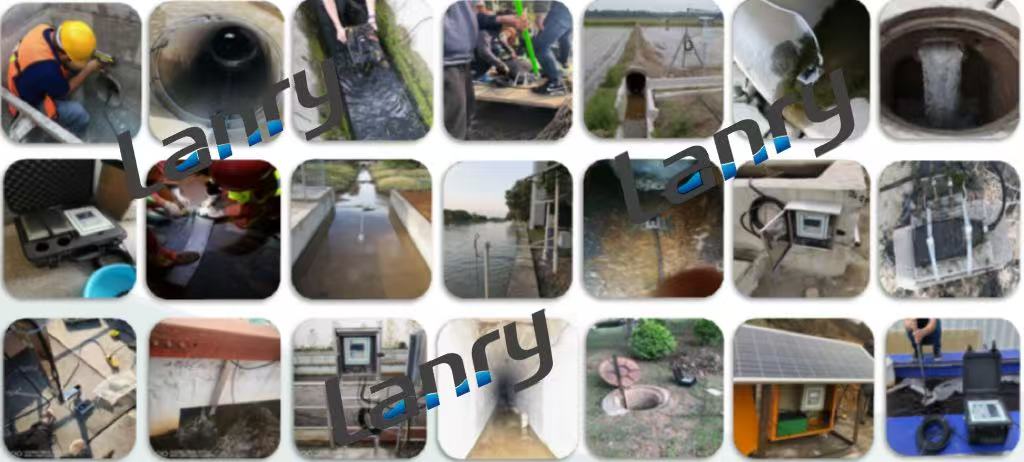Introduction
Open - channel flow meters play a crucial role in measuring the flow rate of water in irrigation systems, wastewater treatment plants, and natural watercourses. However, inaccurate measurements can occur, leading to improper management of water resources, miscalculations in industrial processes, and environmental issues. Understanding the main reasons for these inaccuracies is essential for improving the performance of open - channel flow meters.
Equipment - related Reasons
Sensor Malfunction
- Deposits and Fouling: Over time, sediments, algae, and other debris can accumulate on the sensors of open - channel flow meters. For ultrasonic flow meters, deposits on the transducer surface can disrupt the transmission and reception of ultrasonic signals, leading to inaccurate measurements. Similarly, for electromagnetic flow meters, fouling on the electrodes can interfere with the generation and detection of the electromagnetic field, affecting the measurement accuracy. Regular cleaning and maintenance of the sensors are necessary to prevent this problem.
- Physical Damage: The sensors may be damaged due to mechanical impacts, such as collisions with floating objects or improper installation. A damaged sensor may not function properly, resulting in incorrect readings. Inspecting the sensors for any signs of damage and replacing them promptly is crucial to ensure accurate measurements.
Inadequate Calibration
- Initial Calibration Errors: If the open - channel flow meter is not calibrated correctly during installation, it will produce inaccurate measurements from the start. Calibration requires precise equipment and experienced technicians to ensure that the meter's readings match the actual flow rate. Errors in calibration parameters, such as the cross - sectional area of the channel or the calibration coefficients, can lead to significant measurement errors.
- Lack of Recalibration: Over time, the performance of the flow meter may change due to wear and tear, changes in the channel characteristics, or variations in the fluid properties. Failing to recalibrate the meter regularly can result in increasingly inaccurate measurements.
Installation - related Reasons
Improper Location
- Flow Disturbance Zones: Installing the flow meter in an area with turbulent flow, such as near bends, junctions, or obstructions, can cause inaccurate measurements. Turbulent flow disrupts the uniform flow pattern required for accurate measurement, leading to inconsistent readings. The flow meter should be installed in a straight section of the channel, away from any sources of flow disturbance, to ensure a stable and uniform flow.
- Incorrect Depth and Angle: The depth and angle at which the flow meter is installed can also affect its measurement accuracy. For example, if an ultrasonic flow meter is installed at the wrong angle, the ultrasonic beam may not be properly aligned with the flow, resulting in incorrect readings. Similarly, if the flow meter is not installed at the appropriate depth, it may not accurately measure the average flow velocity.
Incompatible Channel Conditions
- Channel Shape and Roughness: Open - channel flow meters are designed to operate under specific channel conditions. If the actual channel shape or roughness does not match the design specifications of the flow meter, inaccurate measurements may occur. For example, some flow meters are calibrated for rectangular channels, and using them in trapezoidal or irregularly shaped channels may lead to errors. Understanding the channel characteristics and selecting the appropriate flow meter is essential for accurate measurement.
- Variable Water Levels: Fluctuations in water levels can pose challenges for open - channel flow meters. Some flow meters may not perform well in channels with large variations in water depth, as the measurement principles may be affected. In such cases, additional measures, such as using multiple sensors or implementing compensation algorithms, may be required to ensure accurate measurements.
Fluid - related Reasons
Variation in Fluid Properties
- Temperature and Density Changes: Changes in the temperature and density of the fluid can affect the performance of open - channel flow meters. For example, in ultrasonic flow meters, the speed of sound in the fluid changes with temperature, which can lead to errors in flow velocity measurement. In electromagnetic flow meters, changes in the fluid's electrical conductivity due to temperature or chemical composition can also impact the measurement accuracy. Compensating for these changes through temperature and density sensors or calibration adjustments is necessary.
- Presence of Air Bubbles and Solids: The presence of air bubbles or suspended solids in the fluid can interfere with the measurement process. Air bubbles can scatter ultrasonic signals or disrupt the electromagnetic field, leading to inaccurate readings. Suspended solids can cause abrasion of the sensors and affect the flow pattern, resulting in measurement errors. Removing air bubbles and filtering out solids from the fluid can improve the measurement accuracy.
Conclusion
Inaccurate measurement of open - channel flow meters can be attributed to a variety of factors, including equipment - related issues, installation - related problems, and fluid - related challenges. By identifying and addressing these main reasons, operators can improve the accuracy and reliability of open - channel flow meters, enabling better management of water resources and industrial processes. Regular maintenance, calibration, and proper installation are key to ensuring the optimal performance of these flow meters.

Post time: Apr-08-2025

